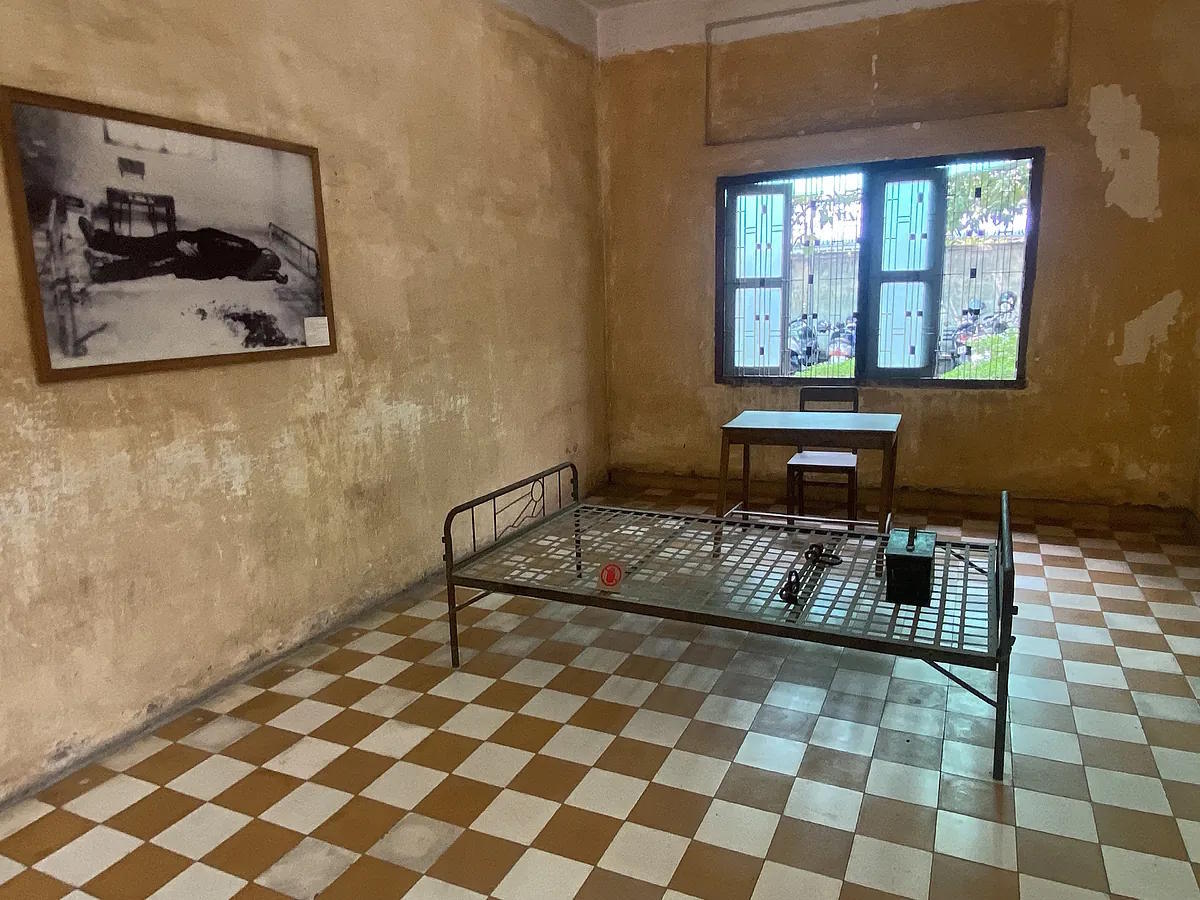Around a courtyard lined with palm trees, there are four three-story buildings that were part of a primary school complex that was transformed into a prison and torture center. In Phnom Penh (Cambodia), lies the former S-21, an abbreviation for the Security Office 21, the most brutal of all the death camps of the genocidal regime of the Khmer Rouge, the Maoist rebels who took power in 1975 and exterminated a quarter of the Cambodian population.
At S-21, there were only 12 survivors among the more than 20,000 prisoners who passed through the facilities. Among that dozen were four children. Five decades later, one of those children occasionally visits the prison, now converted into the Tuol Sleng Genocide Museum, to sign copies of a book he published narrating his story.
"Although I was only nine years old, I vividly remember the day when the guards began to torture my mother. One of them broke all her teeth by hitting her face against a table, while another kicked her in the stomach. I was with my younger brother in a corner, and there was a moment when I hugged her trying to protect her, but the guards pulled me away and continued kicking her. It was the last time I saw her because after that, they put us in separate cells."
This is the account given by Norng Chan Phal as he points to a photograph of himself with his brother on the day when Vietnamese forces overthrew the Khmer Rouge and entered the prison to liberate the survivors. "Before evacuating S-21, the Khmer Rouge guards took several prisoners, and others were shot or beheaded right there. Some children survived because we hid among the dirty clothes. When we were rescued, I thought my parents were alive, that they had been taken to some forced labor camp. It wasn't until years later that I found out they had been executed in the extermination camps on the outskirts of Phnom Penh," Norng recounts.
"We were a normal family of farmers. When the Khmer Rouge arrived, they took away our land and cattle and sent us to work on a collective farm like they did with thousands of rural families. One day, my father disappeared. Later, they took my mother, my brother, and me and brought us to the capital's prison. I never knew what my family was accused of. But other older survivors said they were imprisoned because they disobeyed the regime or because they were suspected of being CIA or Vietnamese spies."
Norng was one of the survivors who testified in court against several former leaders of the Khmer Rouge, including the prison chief, the ruthless comrade Duch, sentenced to life imprisonment in 2012. He passed away eight years later.
We gather Norng's testimony during a visit to the old prison in Phnom Penh in the year marking half a century since Cambodia fell under the yoke of the terrible dictatorship of the Khmer Rouge under Pol Pot. The dictator, after winning the civil war against the Lon Nol government, backed by the United States, sought to build what he called a "Marxist utopia," renamed as "Democratic Kampuchea," leaving behind over a million and a half deaths. Influenced by Chinese Maoism and Stalinism, the group promoted a peasant revolution with the conviction that only through the total destruction of the system could a "rural communist paradise" be built.
Forced labor, mass evictions from cities, indiscriminate massacres, concentration camps, famine... Cambodia became a huge cemetery. Also, a country of orphans. There is a whole generation that does not know when and how their parents died. "The Khmer genocide killed 33% of the men in the country and 15% of the women. In percentage terms, this has been the greatest genocide in history," explained historian Juan José Rivas in this newspaper a few years ago. When Vietnam invaded Cambodia in 1979, Pol Pot and his followers took refuge in the northwest jungle of the country and continued a guerrilla war until the mid-1990s.
After the fall of the genocidal regime, the UN sent several supervisors to Cambodia to help the Southeast Asian country leave behind the dictatorship. A young former commander who had taken refuge in Vietnam, Hun Sen, took the reins promising to defend democracy, hold free elections, and eradicate endemic corruption. However, Hun Sen ended up becoming another tyrant, clinging to power, holding fake elections, and gradually eliminating the opposition.
After serving 38 years as prime minister, in 2023 he handed over power to his eldest son, Hun Manet, the current leader of a country with an overwhelmingly young population, most of whom were born after the fall of the Khmer Rouge. The younger generation wants to leave the nightmares of the past behind and move towards a prosperous future. But there are still many scars from the darkest chapter in Cambodia's history.
A visit to the now museum of horrors in Phnom Penh is a stark reminder. Visitors can enter the former school classrooms that were turned into cells or torture rooms, where some tools are exhibited such as electric cables used to apply shocks to the tongue, nipples, or genitals, and pliers used to pull out nails and teeth. There are also wire whips and wooden sticks. In another building, there are tiny cells built with bricks and wood. In another pavilion, the walls are covered with black and white portraits of almost all the prisoners.
The image of Norng Chan Phal's childhood card is hanging on the mural. The photos were taken by the prison guards, many of whom were never tried for their tortures and murders because, as they were mostly young recruits from peasant families, it was considered that they too had been victims of the regime's brainwashing.
